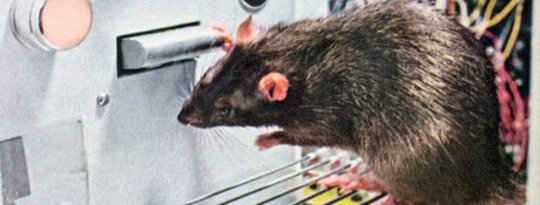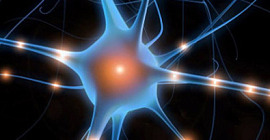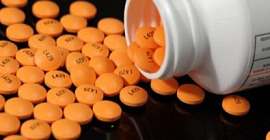
A study in rats found that stimulating a specific part of the brain reduces compulsive cocaine seeking. The finding suggests a potential approach to changing addictive behavior.
Compulsive drug taking, which brings a range of negative health and social consequences, is one of the most challenging aspects of human drug addiction. In 2011, an estimated 1. 4 million Americans age 12 and older were past-month cocaine users. No medications have been approved by the U. S. Food and Drug Administration for treating cocaine addiction.
To gain insights into the neurobiology of compulsive drug use, Drs. Billy Chen and Antonello Bonci at NIH’s National Institute on Drug Abuse (NIDA) have been using an animal model of cocaine addiction. Trained rats learned to push levers to receive cocaine. When the cocaine doses were later followed by a mild electric shock to the foot, most rats stopped pushing the levers. Some rats, however, exhibited compulsive cocaine seeking by continuing to push the levers in spite of the foot shocks.
The researchers compared nerve cell firing patterns in the brains of the shock-sensitive and shock-resistant groups of rats. They studied a region of the prefrontal cortex that, in humans, is involved in decision making and inhibitory response control, which are both compromised in addiction. Their analysis focused on deep-layer pyramidal prelimbic cortex neurons because these cells reach into areas of the brain that have been implicated in drug-seeking behaviors. on April 3, 2013.
Get The Latest By Email
The scientists found that almost twice as much current was needed to activate these neurons in compulsive cocaine-seeking rats than in the shock-sensitive rats or rats that hadn’t been exposed to cocaine. If these neurons are behind the rats’ compulsive behavior, the team reasoned, then activating them might reduce the rats’ cocaine seeking.
The scientists employed a light-based genetic, or optogenetic, technique to activate or inhibit pyramidal neurons in the prelimbic cortex at will. They injected harmless viruses engineered to deliver genes for producing proteins that, once embedded in the neuron’s surface, could induce or inhibit the cells’ activity in response to light of specific wavelengths. ny optic fibers were implanted in the rats’ brains to deliver light pulses to the cells.
As predicted, activating these brain cells reduced cocaine seeking in the compulsive, shock-resistant rats. Inhibiting the cells in shock-sensitive rats increased cocaine seeking during foot-shock sessions.
This exciting study offers a new direction of research for the treatment of cocaine and possibly other addictions,” says NIDA Director Dr. Nora D. Volkow. We already knew, mainly from human brain imaging studies, that deficits in the prefrontal cortex are involved in drug addiction. Now that we have learned how fundamental these deficits are, we feel more confident than ever about the therapeutic promise of targeting that part of the brain.
Bonci says that his group is now planning clinical trials to test noninvasive methods for stimulating this brain region in people. By targeting a specific portion of the prefrontal cortex, our hope is to reduce compulsive cocaine seeking and craving in patients.










